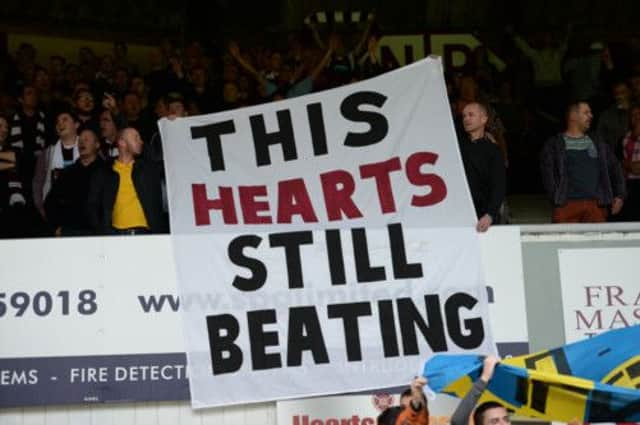Scottish football clubs on ‘financial precipice’


A new survey by accountants BDO, whose insolvency arm has been enlisted as administrator for both Dunfermline and Hearts this year, has revealed that 80 per cent of Scottish top-flight clubs either believe their financial situation could be better or are in need of attention.
BDO warn of “deep-rooted difficulties” which will take several years to solve, but on a more optimistic note conclude that the continuing commitment of supporters provides a platform for a more sustainable future.
Advertisement
Hide AdAdvertisement
Hide AdThe survey, entitled ‘A New Dawn for Fair Play’, questioned the finance directors of 66 teams across the Scottish Premier League (before the recent formation of the SPFL), the English Premier League and the three divisions of the Football League in England.
In a sign that Scottish clubs are learning the lessons of recent turbulent times, with the demise of Rangers and the subsequent financial crises at Hearts and Dunfermline, 80 per cent of those surveyed said they now use a wages-to-turnover ratio as a key indicator of the club’s financial health. But so far only 20 per cent of them come under the recommended ratio of 55 per cent, while the remainder come in under the maximum accepted level of 65 per cent.
Charles Barnett, professional sports group partner at BDO, said: “It is encouraging that almost all clubs recognise the need to use key performance indicators in assessing the finances of their club. There are signs that clubs are making an effort to control wage costs but they still have some way to go.
“No Scottish teams reported they would increase the size of their first-team squad in the coming season with 40 per cent stating it would be the same and 60 per cent stating it would be smaller. In actual wages 20 per cent said they would spend the same with 80 per cent stating they would spend less. The fans never like this but it must be the way forward if Scottish football is to remain viable in the future.
“There are clearly some deep-rooted difficulties in Scottish football which may take some years to work through. The excesses of the last decade or so are still working their way through the Scottish football sector.
“Wages which were allowed to grow beyond any realistic ability to fund them and owners refusing to cut costs despite falling revenues due to the declining economy have left many clubs facing insurmountable debts which they are barely able to service.
“With gate receipts subdued and revenue streams limited it is clear that many clubs continue to exist on a financial precipice where generating funds from the sale of a star player will save a club but an unexpected additional expense might push them over the edge.
“We are at a crossroads for Scottish football but there is one fundamental positive outcome of the last year. The fanbase for many clubs remains fantastically loyal and, as can be seen at both Dunfermline Athletic and Hearts, will rally round to support their club at whatever cost. This means that Scottish football, despite the controversies and the difficulties, has a future.”
Advertisement
Hide AdAdvertisement
Hide AdForty per cent of SPL clubs said they were dependent on principal shareholders to finance annual revenue shortfalls or operating losses, down from 67 per cent in last year’s BDO survey. A fifth of club owners are considering an exit within a year to 18 months and two-fifths reported formal or informal approaches from external parties interested in taking a stake in the club.
“Football clubs appear to be as attractive as ever to external investors,” added Barnett. “This is both a strength and a weakness for the future financial security of football in general.
“Interested parties who invest enthusiastically often want out after a few years when the financial realities of running a football club hit home. It is good that individuals and organisations are enthusiastic but this should always be tempered with a degree of financial reality.
“After a year in which both Hearts and Dunfermline Athletic fell into administration it is welcome news that a large proportion of SPL clubs believe that they will be profitable in the coming year. It is also interesting to note that, when compared with other leagues in the UK, revenues of SPL clubs have not been adversely affected by the loss of Rangers. Last year many observers, including this survey, felt that SPL clubs might experience a decline in income due to the loss of Rangers. However, this hasn’t happened over the last season.
“We don’t yet know what financial impact there will be for clubs from the change in the structure of Scottish football to the SPFL or, indeed, of the arrival of BT as a newcomer into the broadcasting market. There is also the issue of sponsorship for the SPFL which remains undecided.
“This may provide a welcome financial boost in the future but, equally, it is of great concern that, with the season already started, there appears to be limited interest in sponsoring Scottish football.
“Hopefully this will be resolved soon and provide some additional funding and welcome stability for the SPFL.”